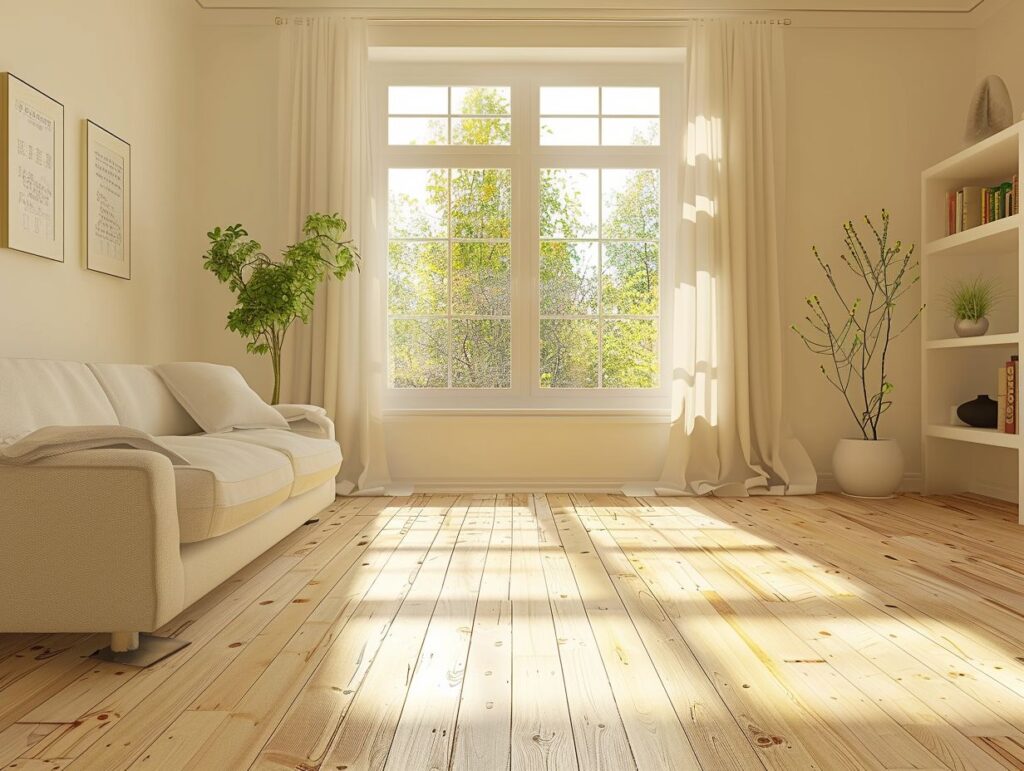Simple Tips To Prevent Dust Accumulation At Home
Are you constantly battling dust at home? Dust accumulation is unsightly and can lead to various health issues. From allergies and asthma to skin irritation, the effects of dust on our health can be significant.
We will explore the causes of dust accumulation and how it can affect our well-being. Most importantly, we will provide simple tips to prevent dust buildup in your living space.
Why Is Dust Accumulation A Problem?
Dust accumulation in homes can lead to various issues affecting indoor air quality and ultimately impacting the health of occupants. Dust particles can exacerbate allergies and respiratory problems and contribute to an unhealthy living environment.
Inadequate control of dust can trigger respiratory symptoms such as coughing, wheezing, and shortness of breath, particularly in individuals with asthma or other pre-existing lung conditions. Dust mites, a common allergen found in dust, can worsen skin conditions like eczema and dermatitis.
Long-term exposure to high dust levels can also lead to more severe health issues, including chronic bronchitis and heart disease. Therefore, regular dusting, vacuuming, and air purifying are essential to maintain a clean indoor environment and promote overall well-being.

What Causes Dust Accumulation?
Several factors contribute to household dust accumulation, ranging from inadequate cleaning practices to external environmental influences. Dust particles gather over time due to insufficient maintenance routines and the impact of outdoor factors that introduce dust into indoor spaces.
In many cases, poor cleaning habits play a significant role in allowing dust to build up unchecked. Neglecting to dust regularly or adequately clean surfaces can lead to the gradual buildup of particles.
Lack of household maintenance, such as infrequent vacuuming or not changing air filters, provides a breeding ground for dust to settle and linger. External sources like pollution from traffic emissions, construction activities, or pollen carried in through open windows contribute to the constant influx of dust, exacerbating the issue.
Combining these factors creates an environment ripe for dust accumulation, highlighting the importance of taking preventive measures to control and reduce dust levels in homes.
Lack of Regular Cleaning
One primary reason for dust accumulation is the lack of regular home cleaning practices. When surfaces are not cleaned frequently, dust particles settle and build up, creating a dusty environment that can impact air quality and overall cleanliness.
Effective dusting techniques play a crucial role in keeping dust at bay. Microfiber cloths or electrostatic dusters can help trap and remove dust effectively without spreading it around. Maintaining clean surfaces enhances the visual appeal of a space and prevents dust from sticking and accumulating.
Consistent cleaning schedules, including vacuuming carpets, wiping down surfaces, and washing linens, are vital in controlling dust levels and promoting a healthier living environment. Regular deep cleaning, such as washing curtains and blinds, can reduce dust particles and allergens.
Poor Ventilation
Inadequate ventilation can significantly contribute to dust accumulation in homes. Poor air circulation allows dust particles to linger and settle on surfaces, reducing indoor air quality and creating an environment conducive to dust buildup. Proper ventilation and a clean HVAC system are essential for controlling dust levels.
A well-maintained HVAC system is crucial in managing indoor air quality by effectively filtering the air and improving ventilation throughout the home. By circulating air properly, the HVAC system can help capture and remove dust particles, preventing them from settling on furniture, floors, and other surfaces. It enhances the indoor environment’s cleanliness and reduces the potential health risks of inhaling airborne dust.
Regular maintenance of HVAC systems ensures they operate efficiently in controlling dust levels and improving overall air quality.
Presence of Pets
Pets can be a source of dust accumulation in homes, mainly due to dust mites in their fur and dander. These allergens can trigger allergic reactions and contribute to dust buildup, highlighting the importance of tidying up regularly to minimize pet-related dust particles.
- Taking steps like brushing pets frequently outside, washing their bedding in hot water, and vacuuming upholstery and floors can help reduce the spread of dust mites.
It’s also beneficial to groom pets in a well-ventilated area and use an air purifier to capture airborne particles. Regularly washing pet toys and cleaning food bowls can further decrease dust levels.
By incorporating these practices into your routine, you can create a cleaner and healthier living environment for your family and furry companions.
Outdoor Factors
External factors such as pollen, pollution, and outdoor debris can also contribute to dust accumulation indoors. These outdoor elements can be carried inside through open windows, doors, or on clothing, leading to increased dust buildup within the household.
To minimize the impact of outdoor dust sources, one can start by regularly cleaning and maintaining exterior surfaces like windows, screens, and door frames to reduce the transfer of dust particles. Implementing simple strategies such as using doormats at entry points, utilizing air purifiers, and keeping indoor plants clean can help limit the amount of dust entering the living spaces.
Removing shoes before entering the house can significantly decrease the introduction of outdoor pollutants and debris. Ensuring proper ventilation and changing HVAC filters regularly can also aid in improving indoor air quality and reducing dust levels caused by external factors.

How Can Dust Affect Our Health?
Dust in our living spaces can significantly impact our health, particularly allergies, respiratory issues, and overall cleanliness. Dust particles can exacerbate existing health conditions, leading to discomfort, reduced indoor air quality, and potential long-term health risks.
When dust accumulates in our homes, it can act as a breeding ground for dust mites, mold spores, and other allergens, triggering allergic reactions in sensitive individuals. For those with respiratory conditions like asthma, inhaling dust particles can worsen symptoms and make breathing more difficult. In the long run, prolonged exposure to dust can harm our overall well-being, compromising our immune system and increasing the likelihood of developing chronic respiratory illnesses. Therefore, it is crucial to regularly clean and maintain a dust-free environment to safeguard our health and promote a healthier living environment.
Allergies and Asthma
Individuals with allergies and asthma are particularly susceptible to the effects of dust accumulation. Dust particles can trigger allergic reactions, worsen asthma symptoms, and create an uncomfortable environment for those sensitive to airborne allergens.
This occurs because dust contains various allergens such as dust mites, pet dander, pollen, and mold spores that can quickly become airborne and be inhaled by individuals with respiratory conditions. When these particles are inhaled, they can irritate the airways, leading to inflammation and triggering respiratory symptoms. To create a dust-free living space, it is essential to implement regular cleaning routines such as dusting surfaces, vacuuming with a HEPA filter, washing bedding in hot water, and using allergen-proof covers on pillows and mattresses.
Respiratory Infections
Exposure to dust can increase the risk of respiratory infections and issues, as dust particles can irritate the respiratory system and compromise lung health. Maintaining proper dust control measures and ensuring cleanliness in living spaces are crucial for reducing respiratory problems due to dust accumulation.
Regular cleaning routines such as dusting surfaces, vacuuming carpets and upholstery, and washing bedding can help minimize dust buildup in homes. Investing in high-efficiency particulate air (HEPA) filters for ventilation systems can also aid in trapping dust particles and improving indoor air quality. Using a damp cloth for dusting instead of a dry duster can prevent dust from becoming airborne and further polluting the air. These simple yet effective steps can significantly contribute to safeguarding respiratory well-being and promoting overall health.
Skin Irritation
Dust accumulation can also lead to skin irritation and discomfort, especially when dust particles come into contact with the skin. Ensuring good hygiene practices, using appropriate dusting tools like microfiber cloths, and maintaining clean surfaces are essential for minimizing skin-related issues associated with dust exposure.
Regular dusting is crucial for preventing dust buildup in living spaces. Dust particles can contain allergens and irritants that may trigger skin reactions, such as itching, redness, or dryness. By incorporating a consistent cleaning routine, individuals can reduce the likelihood of skin irritation caused by dust. Dusting surfaces with gentle, non-abrasive materials is advisable to avoid aggravating the skin. Vacuuming carpets and upholstery can help eliminate dust mites and particles that can lead to skin discomfort. Proactive cleaning measures can significantly improve overall skin health and comfort in indoor environments.

What Are Some Simple Tips To Prevent Dust Accumulation?
Implementing simple tips and strategies can help prevent dust accumulation in your home, creating a cleaner and healthier living environment for you and your family. By following these preventive measures and incorporating effective dusting tools, you can minimize dust particles and maintain a dust-free home.
- Regularly dusting and vacuuming surfaces such as furniture, floors, and curtains is vital to reducing dust buildup. Use microfiber cloths or electrostatic dusters when cleaning, as they are more effective at trapping dust than traditional feather dusters.
- Consider investing in a HEPA-filtered vacuum cleaner to capture smaller particles and prevent them from circulating back into the air. Place doormats at entryways to prevent outdoor dust from being tracked inside, and wash bedding and curtains frequently to prevent allergens from accumulating in these areas.
Attention to these details can significantly improve indoor air quality and create a comfortable living space.
Regular Cleaning and Dusting
Regular cleaning and dusting are fundamental to preventing dust accumulation and maintaining a clean home environment. Establishing a consistent cleaning routine and dusting critical surfaces can reduce dust levels and promote a healthier living space.
Dusting should be done at least once a week in high-traffic areas such as living rooms and bedrooms, as these spaces are more prone to dust buildup. You should pay special attention to frequently overlooked areas like ceiling fans, light fixtures, baseboards, and window sills.
Microfiber cloths or electrostatic dusters can help capture and trap dust particles effectively. A HEPA-filtered vacuum cleaner can further aid in removing dust from carpets, upholstery, and other fabric surfaces.
Remember also to wash bedding regularly to prevent dust mites from flourishing.
Use Doormats and Remove Shoes
Using doormats at entry points and adopting a no-shoe policy indoors can significantly reduce the amount of dust and dirt tracked into your home. Tidying up regularly and keeping surfaces clean is vital in preventing dust accumulation and maintaining a hygienic living environment.
Establishing a designated shoe-free zone inside your home where family members and guests can remove their shoes upon entry helps contain external contaminants. By implementing this practice, you can create a barrier between the outdoor environment and your indoor living spaces, reducing the transfer of allergens, pollutants, and dirt. Strategically placing doormats outside and inside the entry points can capture debris effectively, limiting the spread of dust and grime throughout your home.
Change Air Filters Regularly
Regularly changing air filters in HVAC systems and air purifiers reduces dust accumulation and improves indoor air quality. Clean air filters help trap dust particles and prevent them from circulating, contributing to a cleaner and healthier living space.
This maintenance task is crucial in sustaining a fresh indoor environment by ensuring that the air circulating in your home is free from harmful particles and allergens. By regularly replacing filters, you can significantly reduce the amount of dust that enters your living space, thereby minimizing the risks associated with inhaling airborne pollutants.
Clean filters promote better respiratory health by enhancing air quality and reducing the chances of allergies or respiratory issues caused by dust buildup. It is advisable to check and replace air filters per manufacturer recommendations to maintain optimal performance and efficiency.
Keep Pets Clean
Maintaining pets’ cleanliness and living areas is crucial for preventing dust accumulation caused by pet dander and dust mites. Regular grooming, bathing, and cleaning pet bedding can help reduce allergens and maintain a healthy home environment with minimal dust particles.
In addition to grooming and bathing, keeping your pet’s fur trimmed can also minimize the amount of dander and dust it sheds. Regularly vacuuming carpets, rugs, and furniture can help eliminate accumulated pet hair or dander. Opt for washable pet bedding and clean it frequently to prevent dust mites from thriving. Washing your pet’s toys and accessories is essential to reducing potential dust sources. Integrating these practices into your pet care routine can significantly reduce the impact of pet-related dust in your home.
Control Humidity Levels
Controlling indoor humidity levels is essential for preventing excess moisture that can lead to dust accumulation and mold growth. Maintaining optimal humidity levels helps create a healthy home environment by reducing the conditions favored by dust mites and other allergens.
Excessive humidity in indoor spaces can produce more airborne particles, including dust. The higher the humidity, the more likely dust particles will settle and accumulate on surfaces throughout the house.
To combat this, it’s crucial to implement strategies like proper ventilation, using dehumidifiers, and fixing any leaks or sources of excess moisture. By managing humidity levels effectively, you not only prevent dust buildup but also improve indoor air quality and reduce the potential for respiratory issues caused by allergens.
Seal Cracks and Gaps
Sealing cracks and gaps in windows, doors, and other home areas is a proactive measure to prevent dust infiltration and minimize dust accumulation. By addressing potential entry points for dust, you can create a more airtight environment that reduces the presence of dust particles indoors.
It not only enhances the overall cleanliness of your living space but also contributes to improving indoor air quality.
Common entry points for dust include gaps around window frames, door seals, electrical outlets, and pipes. Identifying and sealing these areas can significantly reduce the amount of dust that enters your home.
In addition to sealing cracks, regularly cleaning air vents, using doormats, and maintaining a clutter-free environment further help keep dust at bay.

Use Natural Cleaning Products
Opting for natural cleaning products can contribute to a healthier home environment by reducing exposure to harsh chemicals and potential irritants in conventional cleaners. Using eco-friendly cleaning solutions helps maintain indoor air quality and minimizes the introduction of harmful substances that can exacerbate dust-related issues.
In addition to safeguarding your health, natural cleaning products offer environmental benefits by being biodegradable and reducing water pollution. Eco-friendly cleaners are often made from plant-based ingredients that are gentle on surfaces while effectively removing dust, dirt, and allergens.
These products not only help in preventing dust accumulation but also contribute to a more sustainable lifestyle. Making your DIY cleaning solutions using ingredients like vinegar, baking soda, and essential oils can further enhance the well-being of your living space, ensuring a clean and healthy environment for you and your loved ones.
Invest in an Air Purifier
Investing in an air purifier can be a valuable addition to your home for minimizing dust particles and improving indoor air quality. Air purifiers help filter out allergens, dust mites, and other airborne particles, creating a cleaner and healthier living space for you and your family.
These devices pull air from the room, passing it through filters that trap dust, pollen, pet dander, and other particles. The HEPA filters in many air purifiers are especially effective in capturing fine particles.
When selecting an air purifier, consider factors such as the size of the room, the type of filter used, and the purifier’s Clean Air Delivery Rate (CADR). To optimize its performance, place the air purifier in a central location, keep windows and doors closed, and regularly clean or replace the filters according to the manufacturer’s recommendations.
Declutter and Minimize Decorations
Decluttering and minimizing decorations in your home can help reduce the surfaces where dust can accumulate, making cleaning more manageable and promoting allergy relief. You can create a dust-free living space that supports better respiratory health by simplifying your living space and maintaining a clutter-free environment.
Utilizing minimalist design principles can enhance your home’s aesthetic appeal and improve its cleanliness and hygiene. To effectively combat dust buildup, consider opting for sleek, streamlined furniture that is easier to clean. Limiting the number of decorative items on surfaces such as shelves and tabletops will significantly reduce the areas where dust can settle. Storage solutions like baskets or bins can help keep items organized and out of sight, further preventing dust accumulation.
- Wash Bedding and Linens Regularly
Regularly washing bedding and linens is crucial for minimizing dust accumulation in bedrooms and ensuring a hygienic sleep environment. Clean sheets, pillowcases, and blankets help reduce allergens and dust mites, promoting allergy relief and supporting healthier living conditions.
Wash with hot water (at least 130°F) to effectively launder bedding and kill dust mites. To prevent irritation, use a gentle, hypoallergenic detergent free from dyes and fragrances. It’s advisable to wash bedding at least once a week to maintain cleanliness and reduce dust buildup. When selecting linens, opt for hypoallergenic materials like cotton or bamboo to minimize dust-related issues in the bedroom and create a cozy, allergen-free haven for a good night’s sleep.